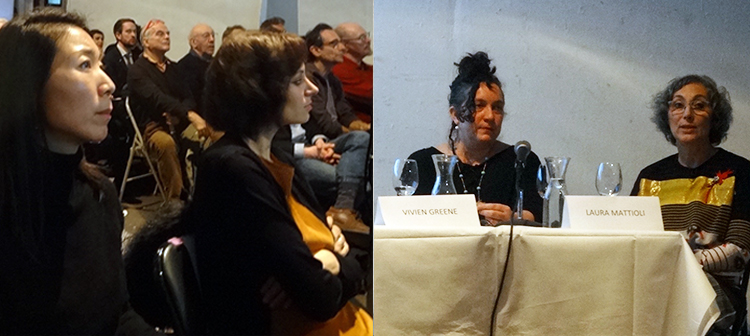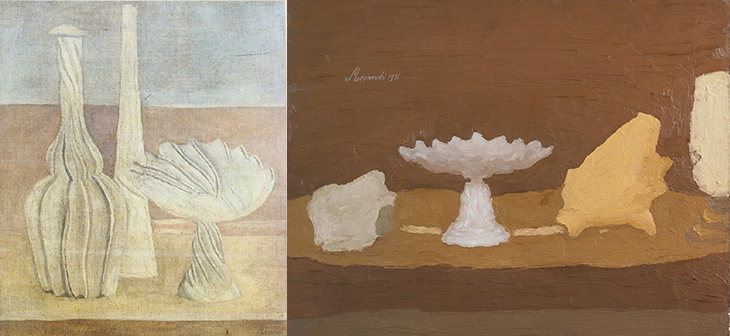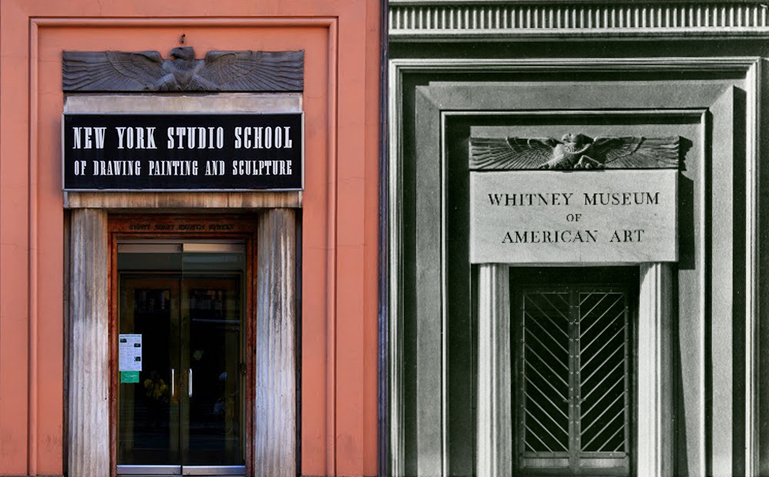Last week, the New York Studio School hosted members of the Center for Italian Modern Art (CIMA) for an interesting talk on one of the greatest Italian painters of the twentieth century: Giorgio Morandi—the subject of the current exhibition at CIMA, on until June 25th.
Laura Mattioli, the founder and president of CIMA, captivated audience members with her memories of the artist and some personal anecdotes about the friendship between Morandi and her father, Gianni Mattioli, an important collector of modern art. She spoke in conversation with Vivien Greene, Senior Curator of 19th- and early 20th-Century Art at The Solomon R. Guggenheim Museum and a member of CIMA’s advisory committee.

Laura Mattioli knew Giorgio Morandi personally, through regular visits she made with her father to Morandi’s home and studio at Via Fondazza 36 in Bologna. Having grown up in an elegant bourgeois home in Milan, Laura recalled the wonder and shock of entering a small space so messy and filled with dust-laden objects and bottles.
The relationship between Laura Mattioli and Morandi was solidified during her first pregnancy. She explained how she was confined to bedrest for many months and spent her time staring at one of Morandi’s paintings, an early Still Life from 1916 (now on view at CIMA). “Each time I looked,” she explained, “I saw something different – it seemed to reveal something new.” She never tired of looking at the painting; it was always teaching her something. This idea of living with great works of art, of seeing a work day in and day out and learning new things from it all of the time, lies at the heart of CIMA’s Fellowship Program, which offers young art historians the opportunity to spend six months studying the artist that is the focus of CIMA’s season.

It was fascinating to be seated in one of the big top-lit studio spaces of the New York Studio School (especially when the sky lit up with occasional lightning flashes). The NYSS was founded in 1963 by a group of art students seeking an art education focused on the “daily continuity of study through work in the studio.” The school occupies eight historic buildings in Greenwich Village, which were once owned by Gertrude Vanderbilt Whitney. Remarkably, this structure served as the original home of the Whitney Museum from the time of its creation in 1929 until 1954. It offers a rigorous, atelier-based education.

This talk, which was part of the New York Studio School’s regular evening lecture series, was part of the growing and collaborative relationship between the NYSS and CIMA. Last winter one of CIMA’s fellows Francesco Guzzetti spoke in the NYSS lecture series, on the relationship between Arte Povera in Italy and conceptual art in the US in the 1970s. In November 2015, CIMA launched its inaugural “Drawing Night,” opening its exhibition space to artists and students to draw inspiration from Giorgio Morandi’s works. Graham Nickson, the Dean of the New York Studio School, led the program. The event was so popular that a second Drawing Night will be held at CIMA on April 19.
There is also a fantastic exhibition on now at the New York Studio School, As I Am: Painting the Figure in Postwar San Francisco. It is a rare opportunity to see a large group of works by the founding members of the Bay Area Figurative Movement—including Richard Diebenkorn and David Park. Hurry! It ends March 13th.
